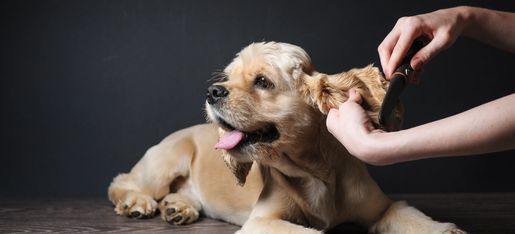Myths About Shaving double Coated Dogs
A Little Bit About Hair
Before being brought indoors as our domesticated, cuddly companions, wild dogs survived outside with little to no help from humans. Thanks to evolution, their coats have been naturally engineered as a defense from the outside elements allowing them to survive in extreme or seemingly inhabitable climates. While some dogs features are a result of mostly natural adaptation, there are other breeds that obtain their features through selective/cross breeding or gene mutation such as the bulldog or the hairless dog. These breeds would likely not thrive for long in the wild on their own, as their features are a result of genetic mutation or man made for a specific function or look and were not intended to aid in their survival in the wilderness. These dogs were able to survive in either undemanding climates with little to no extreme heat or cold or with the help and care of humans. Despite the origin or intention of the breed, there is one feature that remains a consistent necessity for optimal health and protection in all dogs and that is, hair.
Shaving Myths
Hair is an important function in keeping a dog happy and healthy. Learn more below about some of these most common misconceptions about dog hair.
Myth #1: Dogs Don't Need Hair Because They Have Us
While in modern day, hair isn't always seen as a necessary function, it is still arguably one of the most important functions in maintaining a dogs health and is very much essential to their overall well being. Although we have domesticated most dogs who live indoors and are reliant upon their owners for shelter, a dogs first and best defense against common risks associated with inclimate weather, bugs, and bacteria lies in the integrity of their coat.
Myth #2: Shaving My Dog Keeps Them Cooler
During intensely sunny days, dogs coats act as a natural barrier from the suns harmful UV rays and heat. Depleting their body of this natural defense system by shaving it can actually lead to overheating, discomfort, other serious dangers like sunburn and skin cancer. While long coated breeds such as the Poodles or Goldendoodles need their entire coat clipped regularly, this isn't true for our medium or short coated breeds like Golden Retrievers or Labradors. These breeds bodies will stop growing the hair once their body senses it's adequately protected and are especially susceptible to sustaining permanent damage to their coat and skin if shaved or clipped.
Myth #3: Shaving My Dog Reduces Shedding
Shedding is a normal process for dogs and the amount and frequency of hair that is shed often depends upon their breed type, health, diet, and grooming frequency. What seems like excessive shedding can be normal for some dogs, but it can also be the result of stress, poor nutrition, medical issues or seasonal changes. Many dogs develop thick coats in the winter that are then shed in the spring. Dogs who are always kept indoors, however, are prone to smaller fluctuations in coat thickness and tend to shed fairly evenly all year. There are many factors that affect what is normal shedding for your dog and ultimately, cutting the hair short does not reduce the amount or frequency, it simply reduces the length of the shed hair. The best way to minimize shedding is with regular grooming and/or deshed treatments, which thankfully, we can do both!

Our Pricing Philosophy
We'll be honest with you right up front: we are not the cheapest grooming salon in town. If you value quality, safety and a groomer who treats your dog like family, you're in the right place.